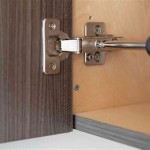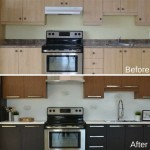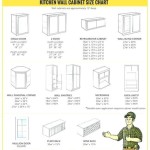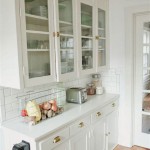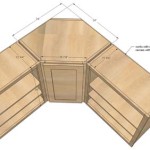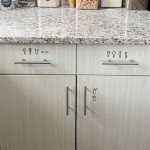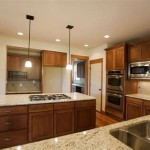How To Repair Corners Of Kitchen Cabinets
Kitchen cabinets, subjected to daily use and occasional bumps, often suffer damage, particularly at the corners. These vulnerable areas are prone to chipping, denting, and separation of materials due to impacts, moisture exposure, and general wear and tear. Repairing damaged cabinet corners not only improves the aesthetic appeal of the kitchen but also prevents further deterioration and extends the lifespan of the cabinets. The following provides a comprehensive guide on addressing common corner damages in kitchen cabinets, outlining necessary tools, materials, and step-by-step instructions for effective repairs.
Assessing the Damage and Gathering Materials
The initial step involves a thorough assessment of the damage sustained by the cabinet corner. This evaluation dictates the repair method and the necessary materials. Superficial chips and dents require different approaches compared to situations where the corner has splintered or completely broken off. Common types of damage include minor surface imperfections, edge banding detachment, and significant structural compromise.
For minor surface imperfections, such as small chips or scratches, the required materials are relatively simple. These imperfections can often be remedied with wood filler or touch-up markers specifically designed for cabinet finishes. Additionally, fine-grit sandpaper (220 grit or higher) is essential for smoothing rough edges before applying the filler or marker. A clean cloth or tack cloth is needed to remove dust and debris, ensuring proper adhesion of the repair material. A putty knife or small spatula is used for applying and leveling the wood filler.
Edge banding detachment necessitates different materials. Edge banding, which is the thin strip of material applied to the exposed edges of cabinet doors and panels, is susceptible to peeling or separating due to moisture and wear. Repairing this type of damage requires a suitable wood glue or contact cement designed for bonding wood or laminate. A small brush or applicator can be used to evenly apply the adhesive. Clamps or painter's tape are crucial for holding the edge banding in place while the adhesive cures. A heat gun or iron can be used to reactivate the adhesive on pre-glued edge banding, facilitating reattachment.
Significant structural compromise, involving splintering or complete breakage of the cabinet corner, demands more extensive repair. In these cases, wood glue, wood filler, and clamps are essential. Depending on the extent of the damage, additional materials may include small pieces of wood to reinforce the corner or wood hardener to strengthen weakened areas. A saw, such as a hand saw or jigsaw, might be necessary to trim damaged sections or shape replacement pieces. Screws or nails can provide additional support, especially when reattaching larger fragments. A drill with appropriate drill bits is needed for pilot holes when using screws.
Beyond the specific repair materials, general tools are beneficial for any cabinet corner repair project. These include safety glasses to protect the eyes from debris, a dust mask to prevent inhalation of wood particles, and adequate lighting to ensure clear visibility of the work area. A workbench or stable surface is beneficial for supporting the cabinet during the repair process.
Repairing Minor Surface Imperfections
Addressing minor surface imperfections like chips and dents involves a straightforward process of filling, sanding, and finishing. The first step involves cleaning the damaged area thoroughly. This removes any loose particles, dirt, or grease that could impede the adhesion of the filler. A slightly damp cloth followed by a dry cloth is generally sufficient for cleaning. For stubborn residues, a mild detergent can be used, ensuring it is completely rinsed and dried before proceeding.
Next, apply a small amount of wood filler to the chip or dent using a putty knife or small spatula. The filler should be slightly overfilled to allow for sanding down to a smooth, level surface. It is important to select a wood filler that is compatible with the cabinet's material and finish. Some fillers are paintable, while others can be stained to match the existing color. Allow the filler to dry completely according to the manufacturer's instructions, which typically takes several hours or overnight.
Once the filler is dry, use fine-grit sandpaper (220 grit or higher) to sand the filled area. The goal is to blend the filler seamlessly with the surrounding surface. Avoid applying excessive pressure during sanding, as this can damage the surrounding finish. Sand in the direction of the wood grain for a more natural appearance. After sanding, remove any dust with a tack cloth.
The final step involves finishing the repaired area to match the existing cabinet finish. This can be achieved using a touch-up marker, paint, or stain. Select a color that closely matches the original finish. Apply the finish in thin, even coats, allowing each coat to dry completely before applying the next. For a more durable finish, a clear topcoat can be applied to protect the repaired area from further damage.
Addressing Edge Banding Detachment and Structural Damage
Repairing detached edge banding requires careful reattachment using an appropriate adhesive. The process begins with cleaning both the detached edge banding and the cabinet edge to remove any old adhesive residue, dirt, or debris. A scraper or putty knife can be used to carefully remove stubborn residue. A solvent, such as mineral spirits, can help to soften and remove old adhesive, but it is crucial to test the solvent on an inconspicuous area of the cabinet first to ensure it does not damage the finish.
Apply a thin, even layer of wood glue or contact cement to both the edge banding and the cabinet edge. Follow the manufacturer's instructions regarding application and drying time. For contact cement, the adhesive is typically allowed to dry slightly before joining the surfaces. For wood glue, clamping is necessary to ensure a strong bond. Align the edge banding carefully with the cabinet edge and apply pressure. Use clamps or painter's tape to hold the edge banding in place while the adhesive cures. Protect the cabinet surface from clamp marks by using soft cloths or padding between the clamps and the cabinet.
After the adhesive has cured completely, remove the clamps or tape. Use a sharp utility knife or razor blade to trim any excess edge banding that overhangs the cabinet edge. Bevel the edges slightly with sandpaper to create a smooth, seamless transition. If the edge banding is pre-glued, a heat gun or iron can facilitate reattachment. Apply heat to the edge banding while pressing it firmly against the cabinet edge. The heat will reactivate the adhesive, allowing it to bond to the cabinet. Use a roller or block of wood to apply even pressure while the adhesive cools.
Significant structural damage, such as splintering or breakage of the cabinet corner, requires more extensive repair. The initial step involves removing any loose or damaged pieces of wood from the corner. Use a saw or chisel to carefully remove any splintered sections. Clean the area thoroughly to remove any debris or dust. If the wood is weakened, apply a wood hardener to strengthen the fibers. Allow the hardener to dry completely before proceeding.
Apply wood glue to the damaged area and any replacement pieces of wood. Clamp the pieces together securely, ensuring proper alignment. If necessary, use screws or nails to provide additional support. Drill pilot holes before inserting screws to prevent splitting the wood. Countersink the screw heads to create a flush surface. Allow the glue to cure completely before removing the clamps. Fill any gaps or imperfections with wood filler. Sand the filler smooth and finish the repaired corner to match the existing cabinet finish.
In situations where a significant portion of the corner is missing, a replacement piece of wood may need to be crafted. This involves cutting a piece of wood to the appropriate size and shape. Use a saw or router to create a precise fit. Secure the replacement piece to the cabinet corner using wood glue and screws. Clamp the piece in place while the glue cures. Sand the repaired corner smooth and finish it to match the existing cabinet finish. Pay close attention to detail to ensure a seamless and durable repair.

How To Repair Broken Corners And Edges On Furniture Ron Hazelton

Kitchen Cabinets 9 Easy Repairs Diy Family Handyman

Lazy Susan Cabinet Repair And Improvement Corner Diy

How To Deal With The Blind Corner Kitchen Cabinet Live Simply By Annie

How To Deal With The Blind Corner Kitchen Cabinet Live Simply By Annie

Discover Everything You Need To Know About Cabinet Repair

Home Repair How To Fix Kitchen Cabinets Diy

How To Deal With The Blind Corner Kitchen Cabinet Live Simply By Annie

Diy Corner Cabinet With No Wasted Space Sawdust Girl

Foolproof Storage Solutions For Corner Kitchen Cabinets
Related Posts

